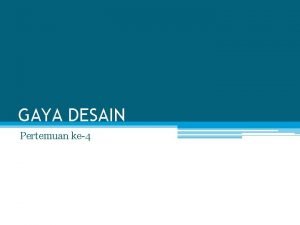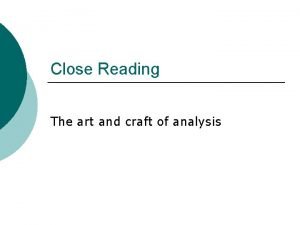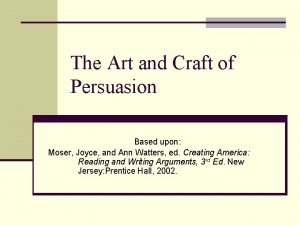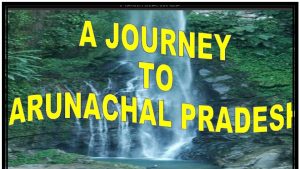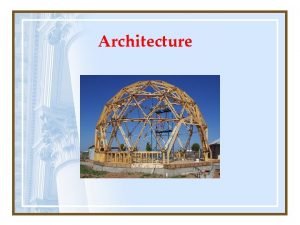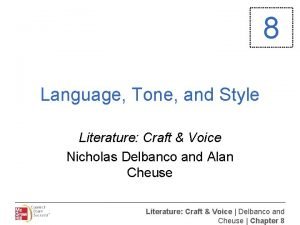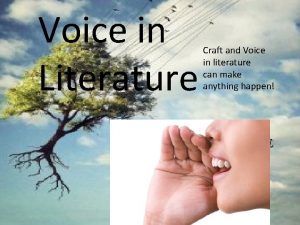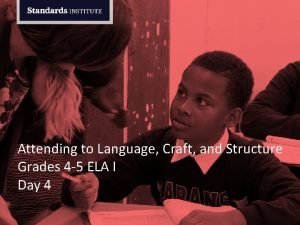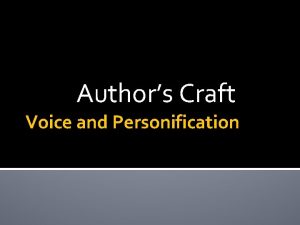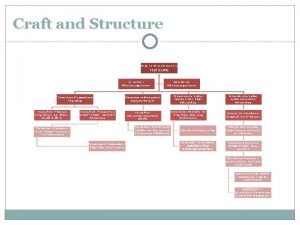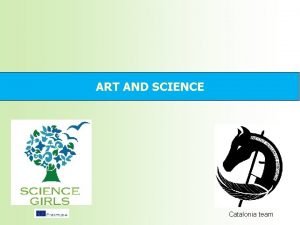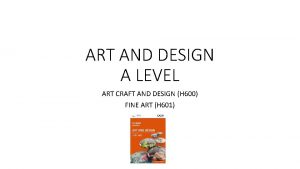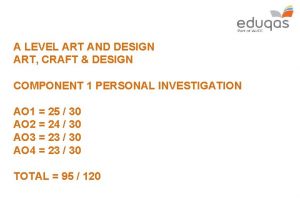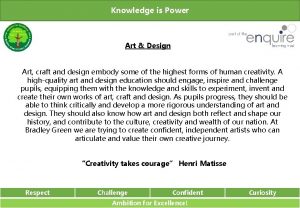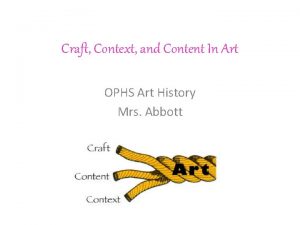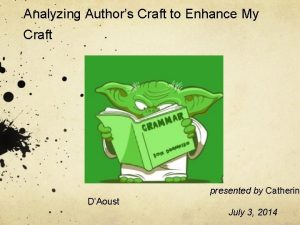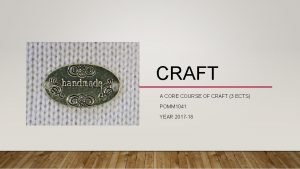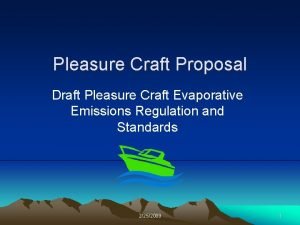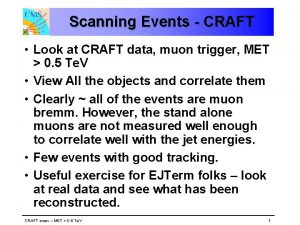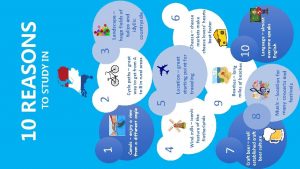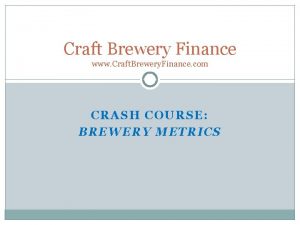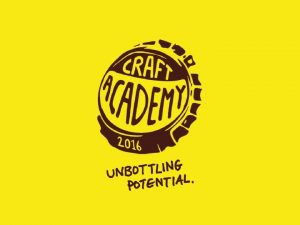The Art and Craft of Team Science Karen

















































- Slides: 49

The Art and Craft of Team Science Karen Mc. Donald, Professor, Department of Chemical Engineering, UC Davis University of California, Davis 11/27/2020 Raymond Rodriguez, Professor Department of Molecular and Cellular Biology, UC Davis University of California, Davis 1

Presentation Overview What TS is and what it is not? What’s driving TS? The gentle yet firm touch of nuanced TS leadership — managing, motivating and inspiring individuals toward a common goal. Team Science: What does diversity have to do with it? Building a team and team communication How to identify and foster effective lines of communication (in the context of different interdisciplinary languages) The Pros and Cons of Team Science 11/27/2020 2

Team Science Experience R Rodriguez DTRA Human Butyrylcholinesterase in Plants (pr. BCHE) NSF Ebola m. Abs in Plants DARPA —pr. BCHE Global Heath. Share Initiative NIH Center of Excellence in Nutritional Genomics Ventria Bioscience Inc. , Founder International Rice Genome Organization MCB 263 co-instructor: Molecular Biology and Biotechnology Design Methodology K Mc. Donald DTRA Human Butyrylcholinesterase in Plants (pr. BCHE) NSF Ebola m. Abs in Plants Inserogen Inc. , Co-Founder DARPA — pr. BCHE NSF CREATE IGERT Graduate Training Grant in Plant Biotechnology NSF I-Corps Program NSF and Chevron grants, for Plant Production of Cellulase Enzymes MCB 263 co-instructor: Molecular Biology and Biotechnology Design Methodology Center for the Utilization of Biological Engineering in Space (CUBES) 11/27/2020 3

We need TS because — society’s problems are serious, interconnect and complex! Climate Change Cancer Man-Made Disasters Food Sufficiency Chronic Disease Mars Colonization

%of Multi-authored Papers The decline in single-authored papers signals the rise of TS

5154 authors, 33 pages, 24 of which are authors Aad, G. et al. (ATLAS Collaboration, CMS Collaboration) Phys. Rev. Lett. 114, 191803 (2015).

What TS is and what it is not? Team Science is not just a multi-investigator agreement to research different parts of the same problem (e. g. , typical collaboration) It is not distributed effort on different workpackages to solve a complex problem (i. e. , distributed computing). Researchers may not even know each other It is not just interdisciplinary research where investigators agree to apply their disciplinary technology to the problem Team Science is a “transdisciplinary” approach to solving complex problems that integrates and aligns expertise and technologies around a shared vision with common expectations. 11/27/2020 7

Factors Driving Team Science Complexity (complex, not complicated problems) Translational research (bench to bedside) Tenuous and erratic research funding Pressure to deliver synergistic results to funding agencies Open access to Internet and cloud-based datasets Connectedness (power law distributed networks) Globalization (no distance too far) 11/27/2020 8

Knowing, Planning, Aligning Three steps from multidisciplinary research to transdisciplinary research (team science) 11/27/2020 9

Stage 1: Knowing and understanding the challenges and opportunities Human Health Biotech Problem Space Analytical Chemistry Plant Molecular Biology 11/27/2020 10

Stage 2: Planning innovative ways to accomplish the objective Human Health Biotech Problem Space 11/27/2020 Analytical Chemistry Plant Molecular Biology 11

Stage 3: Aligning technology and expertise around a shared vision and expectations Human Health Biotech Analytical Chemistry Synergy Efficiency Discovery Problem Space 11/27/2020 Plant Molecular Biology 12

Team Science does not happen spontaneously or come easily! Team Assignments Team Leadership Team Assessment Evaluation Communication 11/27/2020 13

Nuanced TS Leadership is a Mixture of the Three Main Leadership Styles Command Control: Ability to make difficult resource decision and mid-course adjustments to the project Ability to meet milestones and deadlines Focus on speed over quality Consensus Leadership Ability to achieve buy-in from members who already have productive and well-funded research programs. Encourages feedback, self-evaluation and focus on the greater good Collaborative Leadership Trusting select team members with the decision-making authority needed to share information, promote discovery and encourage quality over speed 11/27/2020 14

Case Study: Team. Science@UCDavis Expression of Recombinant Human Butyrylcholinesterase in Nicotiana benthamiana and its Postproduction in‐vitro Glycan Redecoration University of California at Davis Colleges of: Biological Sciences Engineering Letters and Science Agriculture and Environmental Sciences 11/27/2020 15

Production of “must have” bio-therapeutics puts Team Science on the frontlines in the struggle against man-made and natural disasters.

Team Assignments Subtask # Team Members Task 0 1 Start growing N. benth Produce and purify plant-made AAT for practice 2 Gene and vector design 3 4 5 Gene and Vector synthesis (outside) Expression vector construction and confirmation Generation of recombinant agrobacteria 6 r. Bu. Ch. E expression and activity verified in crude extracts BF KM, SN, SA KM, SN, MP, AD, BF, MH AD AD, BF, MH, MP KM, SN, SA, MH, AT 7 8 9 10 11 12 Production and purification (including purification process development) of functional r. Bu. Ch. E at µg level for initial KM, SN, CL, RLR, AG, SA, AT characterization and in vitro modification, ultimately produce and purify 1 - 2 mg Basic biochemical analysis (PAGE, Western, MW, amino CL, SN, AT acid sequencing, CD, MS, HPLC profile) (outside) Basic glycan characterizations of r. Bu. Ch. E before in vitro CL, AG modification and h. Bu. Ch. E for comparison* Synthesize and clone genes for recombinant enzyme XC, YL Demonstration of ability to replace and add galactose and XC, YL, CL, AG sialic acid residues to r. Bu. Ch. E glycans at mg scale Demonstration of homogeneous sialylated glycoforms XC, YL, CL, AG Time line Aug Sept Oct Nov Dec Jan Feb Mar Apr May Jun Jul 2012 2012 2013 2013 X X X X X X X X X X X X X X X X X X X X X X X X X X X BF: Bryce Falk; AD: Abhaya Dandekar; CL: Carlito Lebrilla; XC: Xi Chen; RLR: Ray Rodriguez; KM: Karen Mc. Donald; SN: Somen Nandi; SA: Salem Al-Kanaimsh; MY: My Phu; AG: Andres Guerrero; AT: Aye Tu; YL: Yanhong Li; MH: Min. Sook Hwang 11/27/2020 17

11/27/2020 18

Project Conclusion Glycoforms of r. BCh. E were successfully sialylated in vitro and found to have similar biophysical and enzymatic properties as h. BCh. E 11/27/2020 19

Inclusion: What does diversity have to do with Team Science? 11/27/2020 20

We need TS because — society’s problems are serious, interconnect and complex! Climate Change Cancer Man-Made Disasters Food Sufficiency Chronic Disease Mars Colonization

So why aren’t we using the Earth’s total brain power to solve them? 3. 48 Billion Male Brains 3. 42 Billion Female Brains

Women must be equal contributors in solving tomorrow’s problems

Diversity and Team Science The purpose of diversity in Team Science is to provide new multicultural and gender perspectives on complex problems This assume that there are perspectives on science other than scientific perspectives. Without new perspectives, science becomes a cloistered, semipermeable system that accepts only certain types of input from its surroundings. According to Robert Ezra Park (1864 -1944), the principle source of multicultural perspectives in society is the “marginal man. ” 11/27/2020 24

“The marginal man… is one whom fate has condemned to live in two cultures — in two, not merely different but antagonistic cultures…. his mind is the crucible in which two different and refractory cultures may be said to melt and, either wholly or in part, fuse. ” Robert Ezra Park 11/27/2020 25

What about the Marginal Woman “Living as we did—on the edge—we developed a particular way of seeing reality. We looked from both the outside in and the inside out. We focused our attention on the center as well as the margin. We understood both. This mode of seeing reminded us of the existence of a whole universe, a main body made up of both margin and center. ” bell hooks, Feminist Theory: From Margin to Center. 1984 11/27/2020 26

M. Curie B. Mc. Clintock L. Meitner R. Franklin D. Hodgkin After centuries of marginalizing women of science, in 21 st century, the “marginal man” will be a woman E. Blackburn 11/27/2020 C. Greider L. Villa Komaroff Jennifer Doudna M. Werner-Washburn 27

What are the Team Science opportunities at your doorstep! 11/27/2020 28

UC Davis 13 “Big Ideas” Climate Neutrality Center for Advancing Pain Relief (CAPR) Center for Precision Medicine Center for Violence Prevention Research Consortium for Innovation in Autism, Community & Technology Chemistry Discovery Complex Global Education for All at UC Davis Healthy Aging in a Digital World Healthy Brain Aging Initiative: Brain Health Across the Lifespan Institute for Global Human Rights in the 21 st Century Smart. Farm at UC Davis Veterinary Medicine Center World Water Initiative

Building a Team and Team Communication Professor Karen Mc. Donald 11/27/2020 30

NSF Integrative Graduate Education and Research Traineeship (IGERT) “The IGERT program has been developed to meet the challenges of educating U. S. Ph. D. scientists and engineers who will pursue careers in research and education, with the interdisciplinary backgrounds, deep knowledge in chosen disciplines, and technical, professional, and personal skills to become, in their own careers, leaders and creative agents for change. The program is intended to catalyze a cultural change in graduate education, for students, faculty, and institutions, by establishing innovative new models for graduate education and training in a fertile environment for collaborative research that transcends traditional disciplinary boundaries. It is also intended to facilitate diversity in student participation and preparation, and to contribute to a world-class, broadly inclusive, and globally engaged science and engineering workforce. ” NSF Program Synopsis 11/27/2020 31

Identifying Collaborators and Building a Team TRANSDISCIPLINARY RESEARCH TEAMS Desirable Attributes Essential and complementary expertise Passion (and time) for the project Good person – someone you want to be around and enjoy bouncing ideas off of Good teacher – someone who will spend time explaining things to you Good listener - provides constructive criticisms/critiques Contributor Upbeat/optimistic Sense of humor Moderate ego – team player Methods Network, network Sit in on classes outside of your area Seminars/seminar visitors Funding opportunities – grant proposal writing 11/27/2020 32

Identifying Collaborators and Building a Team TRANSDISCIPLINARY GRADUATE TRAINING TEAMS Additional Desirable Attributes Good mentors Good funding record Champion of diversity, inclusiveness Selflessness Responsiveness/persistence Strategic partners off campus Methods Start with a small group (PI/Co-PIs) to develop vision, define theme and develop ideas for training components Share vision with broader group of faculty to gauge interest, refine ideas, recruit trainers Utilize expertise of Research Development staff!! Talk to graduate students, post-docs and other faculty Identify faculty who give their time to graduate program activities Develop networks off campus with other academics and industry 11/27/2020 33

April 2004 Preliminary Proposal #1 Submitted February 2004 Initiated Proposal Development August 2004 Sept 2004 July 2004 Seven UCD Selected to Invited!! preproposals go forward October 2004 Full Proposal invited – only #1 Submitted 3 allowed June 2005 May 2005 Selected to Four UCD Invited!! go forward preproposals invited August 2005 Full Proposal #2 Submitted March 2005 Full Proposal #1 Reviews February 2005 Preliminary Proposal #2 Submitted February 2006 Selected to go forward February 2006 Full Proposal Limited #2 Reviews Submission Preproposals Due March 2006 Preliminary Proposal #3 Submitted June 2006 Invited!! Sept 2006 Full Proposal #3 Submitted The importance of persistence!!!! August 2007 Awarded!!! 11/27/2020 34

A multi-institutional IGERT with an international component: Tuskegee University National University of Ireland, Maynooth Teagasc Oak Park Research Center, Carlow University of California at Davis University College Dublin National University of Ireland, Galway

CREATE IGERT Project Goals: 1) Develop a framework for interdisciplinary graduate training at the interface of plant science, biotechnology, and engineering 2) leading to new scientific knowledge to move the fields of biofuels/biorefineries, plant-made products and environmental sustainability, 3) attract, recruit, retain and graduate a diverse cohort of doctoral students, 4) cultivate the integrative skill set in graduate students as well as faculty trainers. Challenges: Project coordination particularly with international and university partners Unrealistic expectations for international internships Varying levels of faculty participation in training activities 11/27/2020 36

The CREATE-IGERT graduate training program integrated: • Plant sciences • Cellular and molecular biology • Engineering Funded 27 students at UCD and TU over the past 6 years! 11/27/2020 37

CREATE-IGERT Faculty Trainers 34 faculty trainers from 7 colleges/schools Biological and Agricultural Engineering (Engineering) Julia Fan Tina Jeoh Bryan Jenkins Jean Vander. Gheynst Biomedical Engineering (Engineering) Michael Savageau Chemistry (MPS) Carlito Lebrilla Chemical Engineering and Materials Science (Engineering) Karen Mc. Donald Food Science and Technology (CAES) Bruce German Nitin Sharon Shoemaker Integrative Biosciences (TU) Clayton Yates C. S. Prakash Jesse Jaynes Marcia Martinez Marceline Egnin Ramble Ankumah Medical Microbiology and Immunology (Med) Satya Dandekar 11/27/2020 Microbiology (CBS) Rebecca Parales Molecular and Cellular Biology (CBS) • Ray Rodriguez Pathology, Microbiology and Immunology (Vet Med) Tilahun Yilma Plant Biology (CBS) Katie Dehesh John Labavitch Clark Lagarias Bo Liu Steve Theg Plant Pathology (CAES) Gitta Coaker Bryce Falk Martina Newell-Mc. Gloughlin Pam Ronald Plant Sciences (CAES) Dianne Beckles Eduardo Blumwald Abhaya Dandekar Daniel Kliebenstein Richard Michelmore David Neale John Yoder 38

CREATE-IGERT aims to train Ph. D students in these integrative skill sets: 1) Desire and ability to work in interdisciplinary research teams. 2) Frequent and effective communication between research team members. 3) Establishment of a common ground (a common set of scientific principles and laboratory skills to build upon). 4) Deep knowledge in one's own field coupled with broad exposure in related areas. 5) A commitment to teach others outside one’s field as well as a desire to learn from others outside of their field. 6) Creativity and "out of the box" thinking. 7) Ethical and responsible conduct in research, development and business. 8) An understanding of the global impact, as well as different needs and/or perspectives on the technology in different parts of the world.

Industrial Partners Guest Lectures Seminars/Workshops Equipment Donations Plant Tours Internships Grant Applications External Advisory Board Research Funding

Team Communication: IGERT TRANSDISCIPLINARY GRADUATE TRAINING TEAMS Project management related: within the team Smartsite: Web based data repository, documents, mailtool, calendar Website Listserves/Email New trainee orientation, meeting prior to annual reporting Annual retreat and Distinguished Lecture Mid-project “Self Study Report” Major challenge – keeping all participants, stakeholders, international partners up to date

CREATE IGERT Project Highlights: • New joint research projects among trainers, cosupervised students • Interdisciplinary training helped students achieve diverse career goals (faculty positions, AAAS fellowship in plant biotechnology regulatory policy, industry positions, entrepreneur) • Many new extramural projects have been funded (NSF, DARPA, NSF REU, NSF GK-12) and subteams continue to write joint proposals (STC, ERC, PFI, REU, DOE, USDA, NSF) • Industrial internships continue (required by DEB at UCD and IBS at TU) as well as joint proposals with industry colleagues, TU and international partners 11/27/2020 42

The Pros of Team Science Encourages scientists to cross a broad range of disciplines to apply their knowledge to a complex problem. Encourages participants to approach the problem in a different way, offering their own perspectives based on their own experience (i. e. inclusion and multicultural perspectives). Team Science offers researchers a way to participate in projects that have greater social/global impact. Team science can provide participants opportunities to network and acquire new skills, knowledge and perspectives that can lead to career advancement https: //www. mynewlab. com/blog/the-pros-and-cons-of-team-science-in-laboratory-research/ 11/27/2020 43

The Cons of Team Science Because of the complexity of the problem, TS research projects may take longer than uni-disciplinary projects. Research budgets are often stretched thin because of the administrative need to coordinate project activities and individuals. Project leaders may be outstanding scientists but lack the leadership and management skills needed coordinate, resolve conflicts and provide a sustainable vision for the project (i. e. , buy-in) Multi-author publications take longer and may make it difficult for individuals to receive the recognition they deserve. This can be problematic for grad students seeking a Ph. D and postdocs seeking employment. 11/27/2020 44

When does a project get too big to fly? 11/27/2020 45

5154 authors, 33 pages, 24 of which are author names Aad, G. et al. (ATLAS Collaboration, CMS Collaboration) Phys. Rev. Lett. 114, 191803 (2015).

Summary Team science is an emerging trend for solving complex, multivariate problems that require diverse skillsets, broad knowledgebase and multiple technologies. Participation in a TS project can be a rewarding and life changing experience if managed properly. TS is an excellent opportunity to network and interact with science leaders on problems of great importance. Successful TS projects are characterized by: Clearly defined objectives, goals and milestones Goals that transcend individual needs, ambitions and affiliation A project manager with broad technical knowledge and managerial skills (a skilled accounts manager is also good). Nuanced leadership that provides vision, promotes buy-in from all stakeholders, encourages feedback and is capable of making hard decisions. Leaders with integrity, communication and motivational skills that will engage all stakeholders 11/27/2020 47

CREDITS

Thank You
 Karen yager craft of writing
Karen yager craft of writing Gambar
Gambar Ground zero suzanne berne
Ground zero suzanne berne The art and craft of persuasion
The art and craft of persuasion Thangka painting of arunachal pradesh
Thangka painting of arunachal pradesh Rokodelstvo art & craft slovenija
Rokodelstvo art & craft slovenija What s your favorite subject
What s your favorite subject Bureaucratic bypass syndrome
Bureaucratic bypass syndrome Team spirit becomes team infatuation
Team spirit becomes team infatuation The white team cheers for the blue team, just like
The white team cheers for the blue team, just like It is an art and science of erecting structures
It is an art and science of erecting structures Literature craft and voice
Literature craft and voice Literature craft and voice
Literature craft and voice Presenters name
Presenters name Language craft and structure
Language craft and structure Hình ảnh bộ gõ cơ thể búng tay
Hình ảnh bộ gõ cơ thể búng tay Bổ thể
Bổ thể Tỉ lệ cơ thể trẻ em
Tỉ lệ cơ thể trẻ em Chó sói
Chó sói Tư thế worm breton
Tư thế worm breton Alleluia hat len nguoi oi
Alleluia hat len nguoi oi Môn thể thao bắt đầu bằng từ chạy
Môn thể thao bắt đầu bằng từ chạy Thế nào là hệ số cao nhất
Thế nào là hệ số cao nhất Các châu lục và đại dương trên thế giới
Các châu lục và đại dương trên thế giới Cong thức tính động năng
Cong thức tính động năng Trời xanh đây là của chúng ta thể thơ
Trời xanh đây là của chúng ta thể thơ Mật thư tọa độ 5x5
Mật thư tọa độ 5x5 Phép trừ bù
Phép trừ bù Phản ứng thế ankan
Phản ứng thế ankan Các châu lục và đại dương trên thế giới
Các châu lục và đại dương trên thế giới Thể thơ truyền thống
Thể thơ truyền thống Quá trình desamine hóa có thể tạo ra
Quá trình desamine hóa có thể tạo ra Một số thể thơ truyền thống
Một số thể thơ truyền thống Cái miệng nó xinh thế chỉ nói điều hay thôi
Cái miệng nó xinh thế chỉ nói điều hay thôi Vẽ hình chiếu vuông góc của vật thể sau
Vẽ hình chiếu vuông góc của vật thể sau Nguyên nhân của sự mỏi cơ sinh 8
Nguyên nhân của sự mỏi cơ sinh 8 đặc điểm cơ thể của người tối cổ
đặc điểm cơ thể của người tối cổ Thế nào là giọng cùng tên?
Thế nào là giọng cùng tên? Vẽ hình chiếu đứng bằng cạnh của vật thể
Vẽ hình chiếu đứng bằng cạnh của vật thể Phối cảnh
Phối cảnh Thẻ vin
Thẻ vin đại từ thay thế
đại từ thay thế điện thế nghỉ
điện thế nghỉ Tư thế ngồi viết
Tư thế ngồi viết Diễn thế sinh thái là
Diễn thế sinh thái là Dot
Dot So nguyen to
So nguyen to Tư thế ngồi viết
Tư thế ngồi viết Lời thề hippocrates
Lời thề hippocrates

